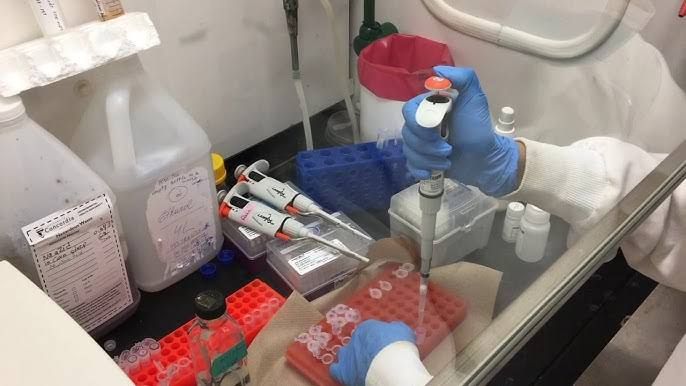
The isolation of RNA from yeast cells involves several critical steps to ensure high yield and quality of the RNA. Below is a detailed, step-by-step protocol that outlines the procedures for effective RNA extraction from yeast, specifically using methods that minimize degradation and contamination.
Step 1: Preparation of Yeast Culture
- Grow Yeast Culture: Start by inoculating a single colony of yeast (e.g., Saccharomyces cerevisiae) into liquid growth medium (such as YPD) and incubate it at 30 °C with shaking until it reaches an optical density (OD) of approximately 2.0, which corresponds to mid-log phase growth. This typically takes several hours.
- Harvest Cells: Once the culture has reached the desired OD, centrifuge the culture at 3000g for about 4 minutes at room temperature to pellet the yeast cells.
- Wash Cells: Discard the supernatant and wash the cell pellet with RNase-free water to remove residual media components.
Step 2: Cell Lysis
- Resuspend Pellet: Resuspend the washed cell pellet in an appropriate lysis buffer. A common formulation includes:
- 10 mM Tris-HCl (pH 8.5)
- 5 mM EDTA
- 2% SDS
- Optional: Add 2% β-mercaptoethanol for reducing conditions.
- Disrupt Cell Walls: Transfer the resuspended cells to a tube containing glass beads or use enzymatic treatment (like Zymolyase) to facilitate cell wall disruption:
- If using glass beads, vortex vigorously for about 1-2 minutes.
- If using enzymes, follow manufacturer instructions for incubation times and temperatures.
- Heat Treatment: Place the tube on a heat block set at approximately 83 °C while mixing at around 450 rpm for about 20 minutes to denature proteins and further disrupt cellular structures.
Step 3: RNA Extraction
- Centrifugation: After lysis, centrifuge the mixture at high speed (12,000g) for about 5 minutes to separate debris from the lysate.
- Phenol-Chloroform Extraction:
- Carefully transfer the supernatant to a new tube.
- Add an equal volume of phenol (pH 8) and vortex gently for about 15 seconds.
- Centrifuge again at high speed (12,000g) for about 2 minutes.
- You will observe three phases forming: lower phenol phase, interphase with debris, and upper aqueous phase containing RNA.
- Second Extraction:
- Transfer the upper aqueous phase to another clean tube.
- Add chloroform (equal volume) to this aqueous phase and mix gently before centrifuging again.
- Transfer the new upper aqueous phase into yet another clean tube.
- Precipitation of RNA:
- To precipitate RNA, add sodium acetate (final concentration ~0.6M) followed by cold ethanol (approximately two volumes).
- Mix well and incubate at -80 °C for at least 20 minutes or overnight if desired.
- Final Centrifugation: Centrifuge again at maximum speed (12,000g) for about 15 minutes in a cold environment to pellet the RNA.
Step 4: Washing and Resuspension
- Wash Pellets: Carefully remove ethanol from the pellet without disturbing it and wash with cold 70% ethanol.
- Drying Pellets: Air dry or briefly dry on a heat block set below room temperature (<37 °C). Avoid overheating as this can degrade RNA.
- Resuspend RNA: Finally, resuspend your RNA pellet in RNase-free water or an appropriate buffer such as TE buffer (10 mM Tris-HCl pH8, 1 mM EDTA).
Step 5: Quality Control
- Assess Quality and Quantity:
- Use UV spectrophotometry to measure absorbance ratios (A260/A280 should be around ~2.0).
- Run samples on an agarose gel alongside a ladder to visualize integrity; intact rRNA bands should show clear bands corresponding to ribosomal RNAs (~25S/18S).
By following these steps meticulously, you can achieve high-quality RNA suitable for various downstream applications such as RT-PCR, microarray analysis, or sequencing studies.







